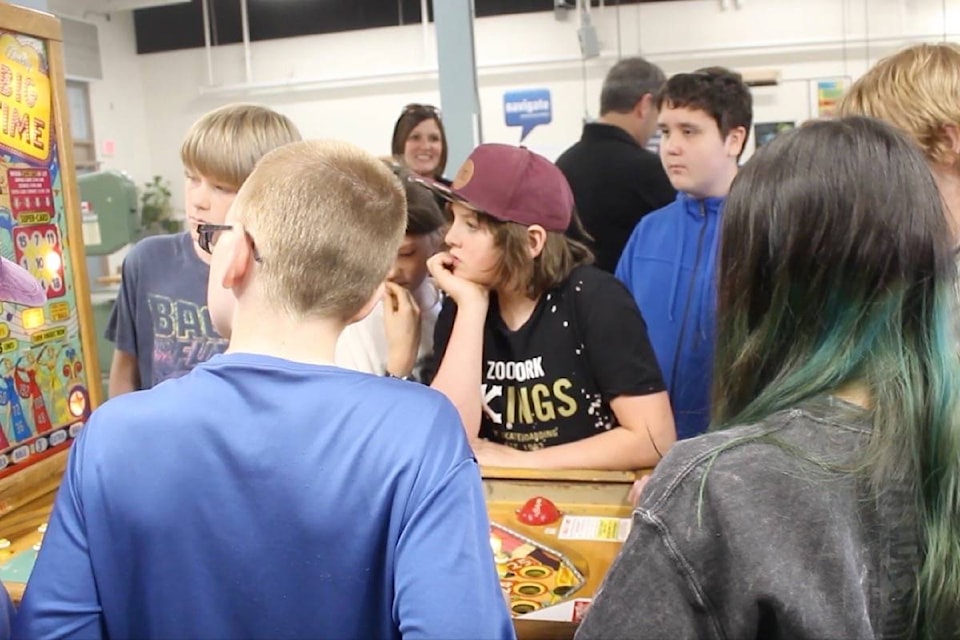After five months of work, the whirls and pops of gears is a reassuring noise - one that is nearly as loud as the cheers surrounding a 1954 Bally pinball machine at Aspen Park Elementary School in Comox.
The cheers are coming from the North Island District Education School (NIDES) engineering class gathered around the classic machine - a machine the students restored themselves and got to play with for the first time Thursday afternoon.
Parent Graham TerMarsch - who restores pinball machines himself - donated three matching machines with the hopes the class could restore them to a functioning level.
“Putting a pinball machine back together kind of depends on the age and the era of the machine. Some machines’ parts are still readily available, for other eras. These machines are from 1954… some parts are available; but [only] some, not all,” he explained.
“Thanks to new technology, some pieces can be 3D printed, but our hope is that out of the three machines we had to work with, we could salvage parts from two to get one functioning machine.”
After consulting with teacher Meiko Matsumoto, TerMArsch worked with the class - and the hundreds of feet of wires inside - to strip the machines as a reverse engineering project.
“Working with the kids was fantastic. The kids were excited, energetic, and want to get involved in the project - wanting to pull them apart not just to get in there and rip them apart, but to actually get in there and see how the pieces… worked, and asking the really good questions.”
Matsumoto said the experience was great for the students because they could see how things learned in the classroom could be applied to an actual project.
“They could get excited about what they’ve done, but when it comes together and see it working and happening, it’s kind of magical,” she noted.
“It’s wonderful because you actually see those ‘aha’ moments happening - you can give them different examples, but when they’re actually hands-on and see things moving, then it really sinks in and they can actually apply their learning.”
Matsumoto said with new technology it’s difficult to see the “magic,” as so many digital electronics are now enclosed and it’s difficult to understand the mechanics behind them.
“Now they can actually understand those components and how they work inside, which is fantastic. And it sparks a whole other conversation in science about planning, engineering - you can (even) have a whole conversation about waste.”
For student Connel Haigh, it was new technology meets old when he Instagrammed a story on the wires in the back of the machine.
“It was pretty surprising because it looked like a snake at the bottom of the machine because of the wires,” he noted, and added this was the first project he fixed.
“When we first got to play (it), I was really excited about it,” he said, and added working on the class project has now inspired him to look into a career as a mechanic.
